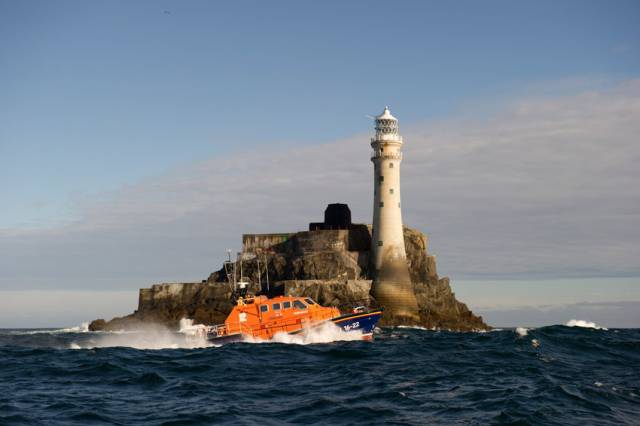#RNLI - In the first of two incidents yesterday morning (Thursday 3 August), Baltimore RNLI launched to reports of a vessel adrift in Crookhaven Harbour.
The vessel, a 4m Boston Whaler powerboat, had broken from its mooring in strong winds and was drifting outside the West Cork harbour.
There was no one on board the vessel, and weather conditions at the time were poor, with an easterly force 6-7 wind and 4-5m sea swell.
Baltimore's lifeboat arrived on scene at 8.38am, some 51 minutes after launch, and established a tow to bring the vessel back into the harbour, where it was secured to a mooring.
As the lifeboat was departing to return to station at 9.11am, the Irish Coast Guard contacted them to investigate another boat in trouble in the area.
The second vessel, a 20ft Merry Fisher pleasure boat with no people on board, had gone ashore on rocks in Crookhaven.
Due to the position of the vessel on the shoreline, coxswain Aidan Bushe decided to launch the Y-boat from the stern ramp of the lifeboat.
The Y-boat, with Kieran Collins and David Ryan on board, secured a tow and pulled the casualty vessel clear of the shoreline. The lifeboat then took up the tow and secured the vessel on a mooring.
Speaking following the callout, Baltimore RNLI volunteer lifeboat press officer Kate Callanan said: “It is advisable in such incidents, where boats get into trouble near the shoreline, to call the coastguard for assistance. This reduces the risk of people getting themselves into a dangerous situation.
“If you get into difficulty at sea, call 999 or 112 and ask for the coastguard.”
Bushe, Ryan and Collins were joined on yesterday’s callout by mechanic Sean McCarthy and crew members Jerry Smith and Don O’Donovan. Micheal Cottrell provided shore crew assistance at the lifeboat house.
































































